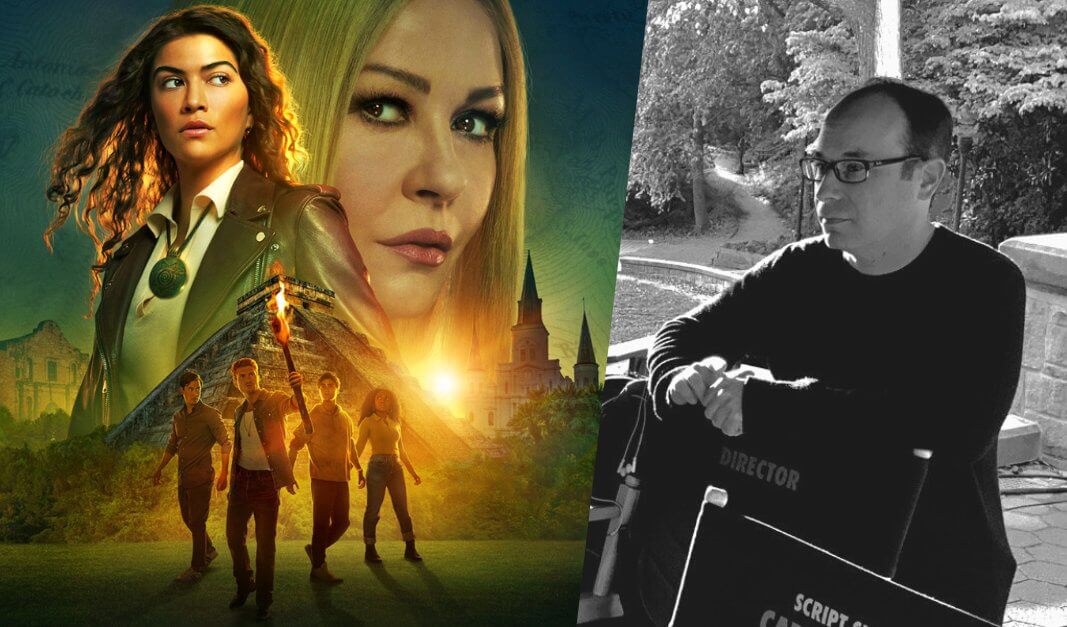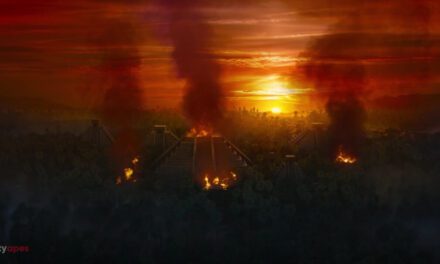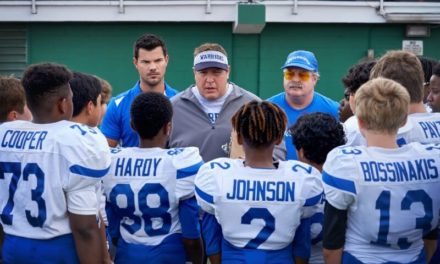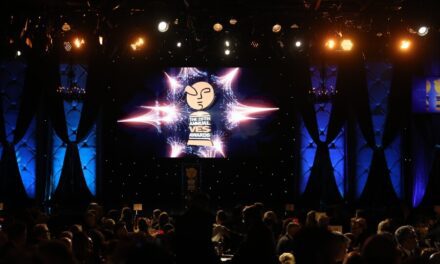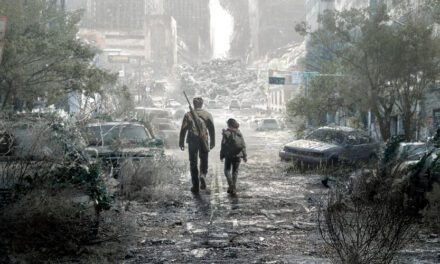Before the National Treasure: Edge of History characters ever got off their couch to chase relics imbued with centuries of mythic greed, a map filled with a thousand tiny decisions had already been drawn and traveled. What kind of effect best illuminates an ancient Spanish text? What kind of fantastical flashback to Mayan times establishes a tone of century-spanning adventure? And when we fill a henchman with bullets, how much blood do we show?
One of the primary VFX cartographers who helped develop the vibrant world of Edge of History was Producer and Director Brad Tanenbaum. Brad’s career has spanned hundreds of episodes of television and his roles have been multi-faceted: second-unit photography, in-house producer, director (and an Emmy win for CSI’s “Best Visual Effects” in 2010). Beneath all of these roles is a common thread:
He is a storyteller.
Brad took the time to talk to us about the creativity behind Edge of History’s VFX, and the long road to success as a filmmaker.
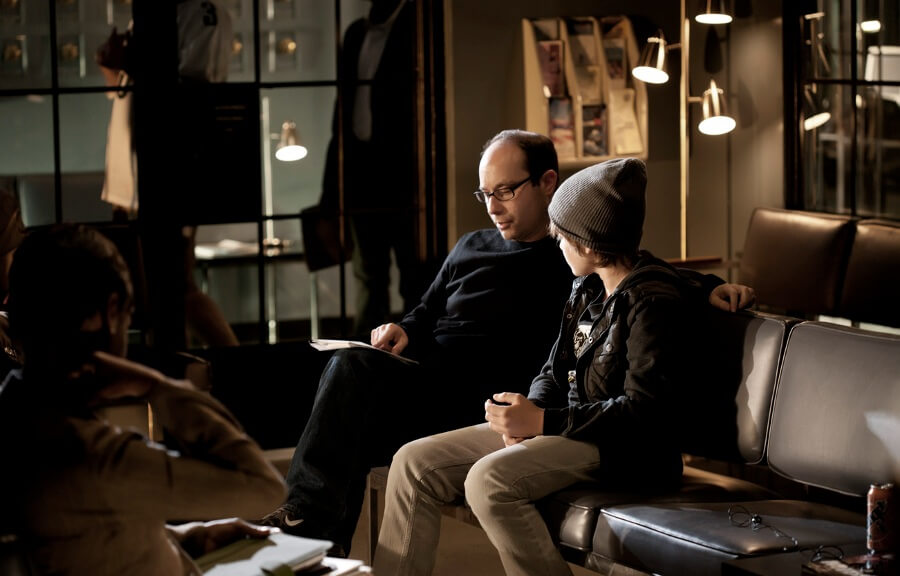
Producer and director Brad Tanenbaum with Kai Caster on the set of CSI, photo credit: IMDb
The very first scene in Episode One of Edge of History is an elaborate CG historical sequence that takes the viewers back to a violent world of conquerors and lost treasure. On the development of this grandiose creative opening:
We had very little prep time to get that sequence done. We storyboarded it and we did a lot of research of historical paintings, of imagery where we said “oh, we like that, we like this”. We actually cut the sequence together ahead of time with storyboards and with some paintings that we liked. We temp. voiced Harvey Keitel’s character and that’s how we kind of won the idea to do it – we sent that to Disney+ and said “Hey, what do you think of this?” And they said, “yeah, go for it – do it.”
On Edge of History’s stylistic influences in the opening sequence:
We stylized it with an homage to Bram Stoker’s Dracula and Lord of the Rings where everything was kind of silhouetted – because we wanted to give a little style to it. All the movies opened up with some kind of historical background and we tried to do the same.
When Jess Valenzuela and her crew would have an “aha!” moment to reveal a puzzle piece, they were called “clue minds”. These were imperative to illuminating (literally) important steps towards the treasure. On paying homage to the original National Treasure:
Anytime Ben Gates would decipher things, and it turns out to be the “aha – that’s what it is!”, it was always illuminated gold. Visual effects and those style shots have evolved since the films so we tried to really stay in tune with what Jon Turteltaub came up with in the movies and what the Wibberlys (Marianne Wibberly and Cormac Wibberly) – our writers and showrunners – came up with for the movies – but just kind of update them for the series 20 years later.
Much of the locations that Jess Valenzuela and her friends travel to are set extension work. The show was shot in Baton Rouge and New Mexico, but needed help to take them to Graceland and the Alamo:
(SPOILER!) Kacey and Billie’s other friend dies inside the cave – that was a practical cave outside of New Orleans. It was an old fort from the war of 1812 that our art department dressed to look more Incan and Mayan with the vines and the stuff on the wall, but when he fell, it was all a visual effect.
Because we shot in Baton Rouge, there was a lot there to shoot in, but also because the show travels, we relied heavily on Crafty Apes to take us to those environments.
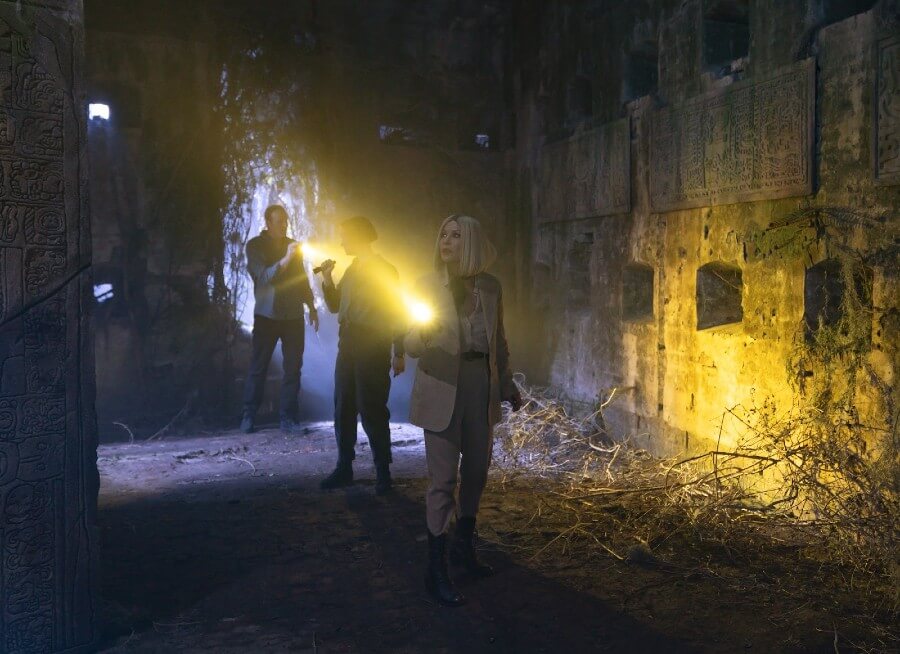
Photo credit: Disney/Brian Roedel
A newly created piece of New Orleans lore: Fort Macomb – the fort that Brad just described in the episode where Billie (Catherine Zeta-Jones) searches for a relic – this was the same fort where the climax of 2014’s True Detective was filmed.
On the craftsmanship of effectively enhancing an environment with hidden VFX:
A lot of our visual effects are hidden. There were probably 60 shots inside the masonic lodge as a whole that nobody even knows whether they were (visual effects). There was some clean-up and there was some enhancing just to make it what we needed for that particular episode of storytelling. The collaboration was great.
Brad believes in close communication with actors to build up trust as they navigate the story world together. As a television director with a knowledge of VFX, he also recognizes the necessity of being a collaborative presence, and the value of always staying open to learn:
My process in the moment is cutting in my head before I even shoot. I’ll be the first one to say, I’m not a visual effect supervisor – I’m a director who understands visual effects. So I will always rely on Kolby (VFX Supervisor Kolby Kember) and Davy (VFX Supervisor Davy Nethercutt) and Kyle (VFX Producer Kyle Dutton) – any visual effects supervisors or producers I work with – to tell me what to do.
He continued:
I think having a background as a producer in the visual effects side and the post-production side, it helped me. I’ve sat in the editing room a lot, and I’ve worked with lots of editors, and I learned a lot of my mentors are editors because I’ve been able to watch the scene shoot (before I even started directing), and then I used to spend hours with editors as they assembled dailies to see what they use versus what they don’t use. That really helped my training. But I will always say I’m first an actor’s director.
The relics, the clue revelations – they often have a wondrous glow about them. On the creativity of the illuminated effects:
It was whatever was going to draw your eye the most. The gold seemed to really kind of say “aha!” The colors of all the boxes were scripted. One is obsidian, one is jade, the other is blue.
Getting those correct and the look of those took some time for everybody to get their thoughts and creativity together. That took some visual effects help to make sure – especially the obsidian box, the first one – took some visual effects help to get that right and make it look the way that we want and like real obsidian. Our prop department was amazing. Week-to-week, they were coming up with new relics and new books, and making it look the way that it was written – that was intricate.
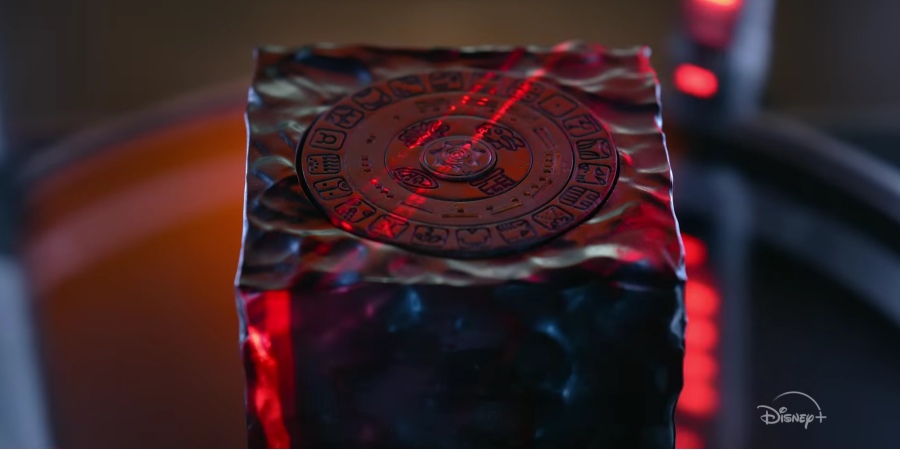
Photo credit: Disney
On the logistics of achieving these effects in a quickly-moving shoot:
We temped a lot of those in editing. We have a really great visual effects editor who temped those out, and she was amazing – her name is Dalia (Dalia S. Beltran). We worked together with the editors and myself and Kolby and the team at Crafty Apes temped things out ahead of time so everybody would get an idea of what it was gonna look like before they started a lot of the CG work.
On balancing the vulnerability of leaving home for months with the satisfaction of a great project:
It was a great opportunity. Leaving my family for six and a half months was not easy – I was able to come every couple of weeks and they came out, but that was by far the hardest part – is being away for that long – but the work was great. And I knew right away when I read the pilot, there was also a show-n-tell of what each episode was gonna be, so I knew we had something good.
On working with Baton Rouge’s finest VFX artists:
Working with the team at Crafty Apes was a dream come true. They’re amazing, truly professional – everything they touched was gold.
So you want to be a professional filmmaker…
I kind of tell students the same thing – I think if you really want it, you have to accept that you are gonna start from the bottom.
Some advice:
I would say patience is my number one advice. If you’re a writer, keep writing – that’s a luxury you have, being a writer. If you’re a director, shoot as much as you possibly can. Keep bettering yourself. I will say this – every time I shoot something I learn something new every time and I get better every single time.
And…
Patience, patience, patience. It’s a long road to succeed. I would say the next thing is to learn as many skill sets as you can. You don’t always get hired for what you really wanna do every single time, especially at the beginning.
Behind every filmmaker’s lens, there is a person who once saw something that impacted them so giddily or broke their heart so effectively that they knew they wanted to do this one day. The root of so many great storytellers is a kid in a movie theater completely enrapt with wonder:
When I was a kid I sat in the movies and saw E.T. on the big screen. I remember sitting in the theatre with my brother crying my eyes out when Elliott and Gertie said goodbye to E.T. I had an epiphany then. What is this on the screen, that is creating this emotion in me? Ever since then, I fell in love with movies. I grew up in the 80s watching serialized television and fell in love with storytelling and I knew I wanted to be a part of it. Getting there was a whole other step.
I am very fortunate to come to work and appreciate that I got to live out my dream and I truly love what I do.

